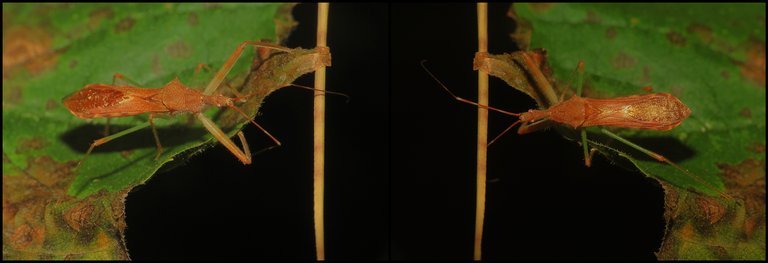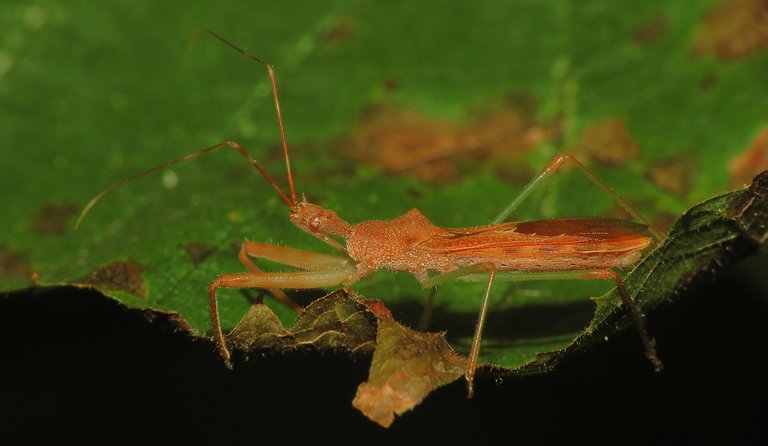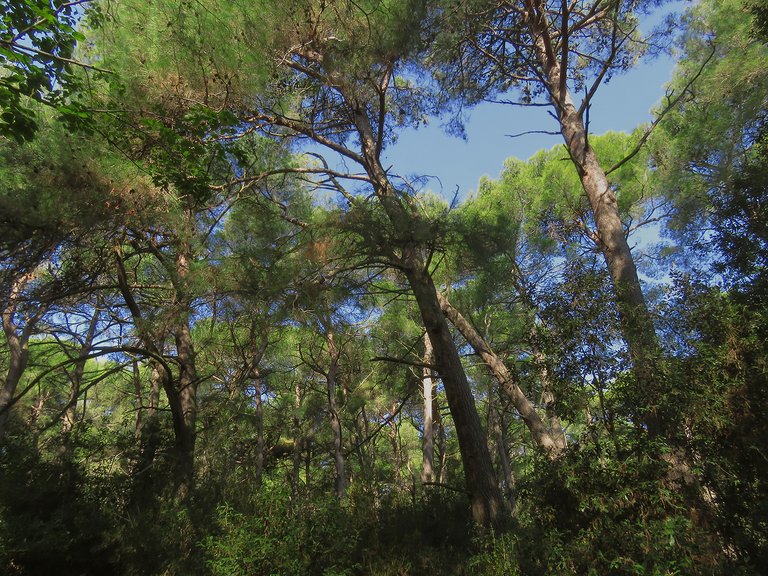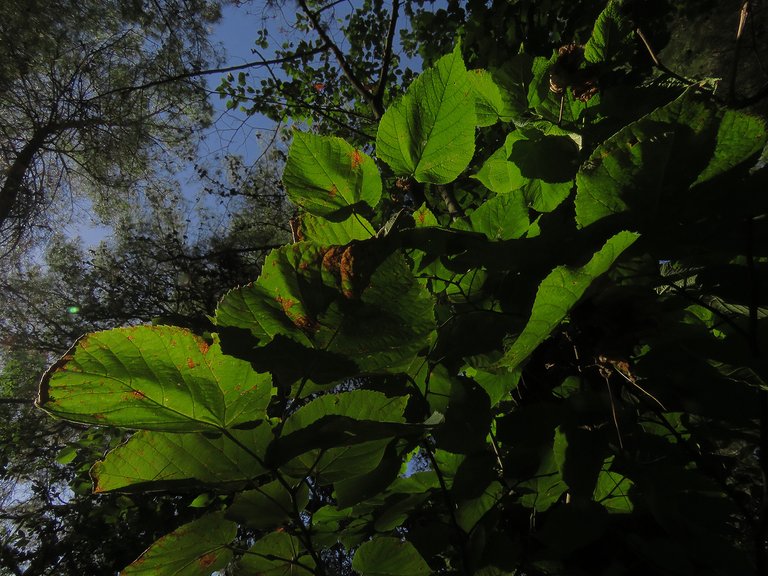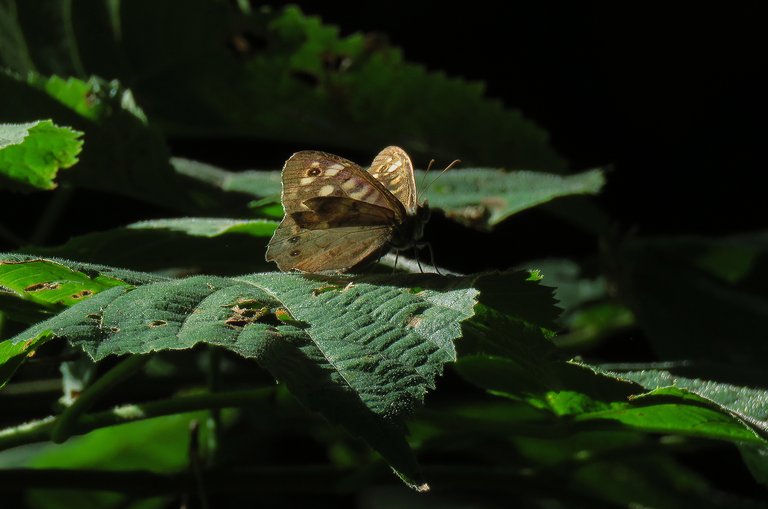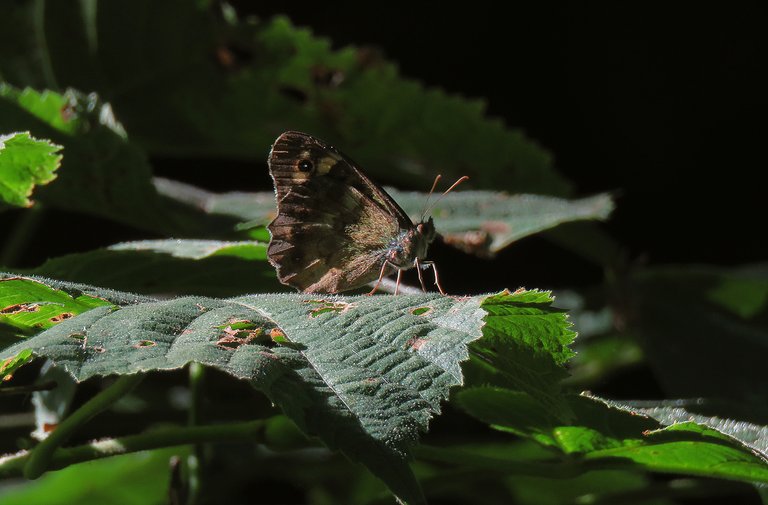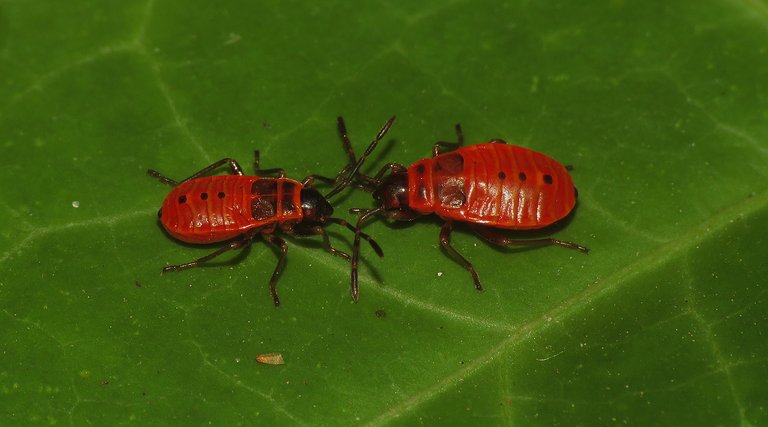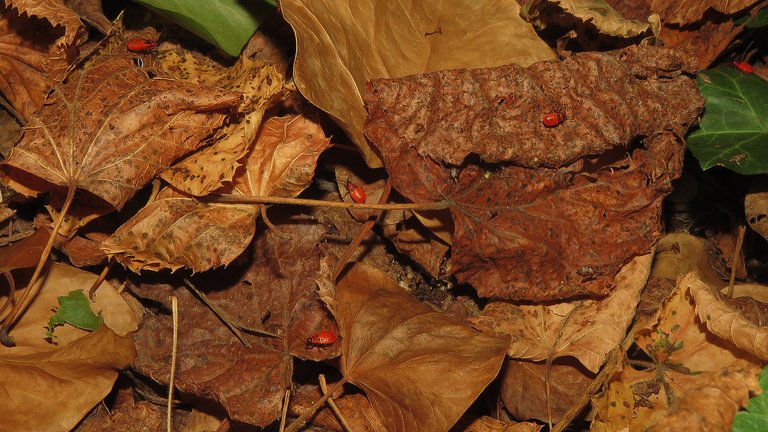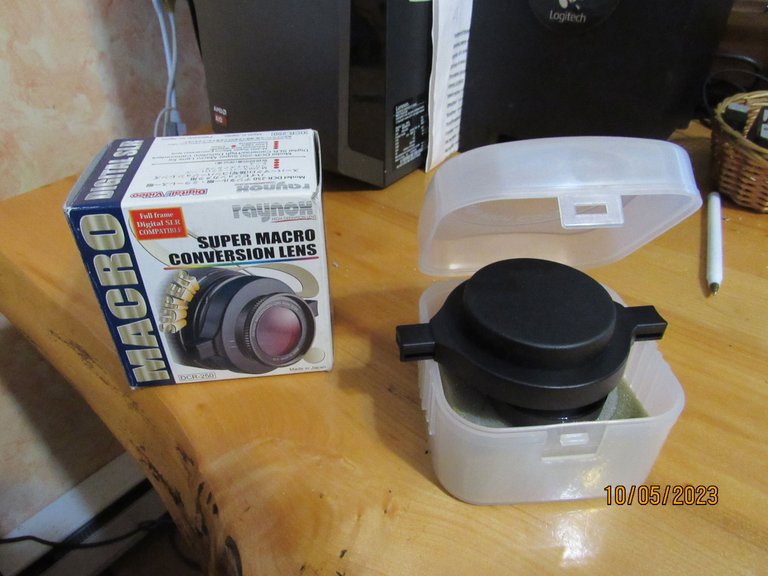I had to do some stuff in the city, early in the morning. That means that I spent some time in the forest park behind the last suburban houses when all the chores were done. It's my city ritual, I rarely skip it.
This time I was focused on the Tilia platyphyllos tree and the three hemipteran species I found among its foliage.
Here you can take a look at the tree that functions as some kind of backbone of the narrative structure in today's post. Everything revolves around that tree. In the following photograph ...

... you can take a better, more up-close look at its large ovate leaves.

The first insect I decided to present is this long-legged predatory bug from the Reduviidae family.
The name of the species is Nagusta goedelii.
I never saw this bug before this summer.
The old and tall Pinus brutia pines dominate the part of the park close to the road that leads in and out of the city.
Compared to them Tilia platyphyllos it's a very small tree.
Dry needles that fall from the pines pave the forest floor and, as you can see in this photograph, decorate the smaller trees and shrubs.

Here you can see another type of interesting "decoration" on the leaves of the Tilia platyphyllos tree.

These protuberances are a product of the mite activities. The name of the minuscule arachnid responsible for these creations is Eriophyes tiliae.
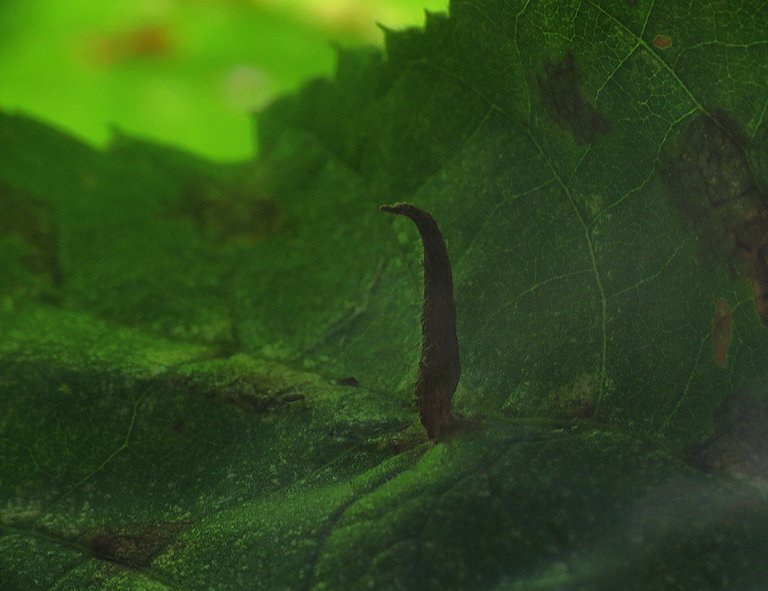
The chemicals the mite releases while sucking the sap induces the growth of this thing around the arachnid. It's like magically growing a house around the source of food. While I was photographing the mite galls ...
... a butterfly landed on the leaves a meter or two from me.
This is the Pararge aegeria, a species from the Satyrinae family.
The butterfly looks considerably different when photographed in different light.
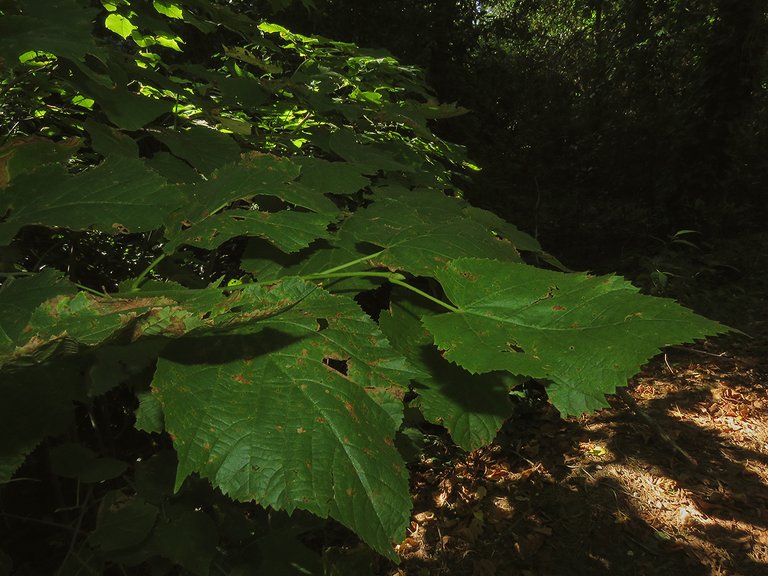
Here you can take a look at the leaves on the thin lowest branches that sprouted from the base of the trunk.
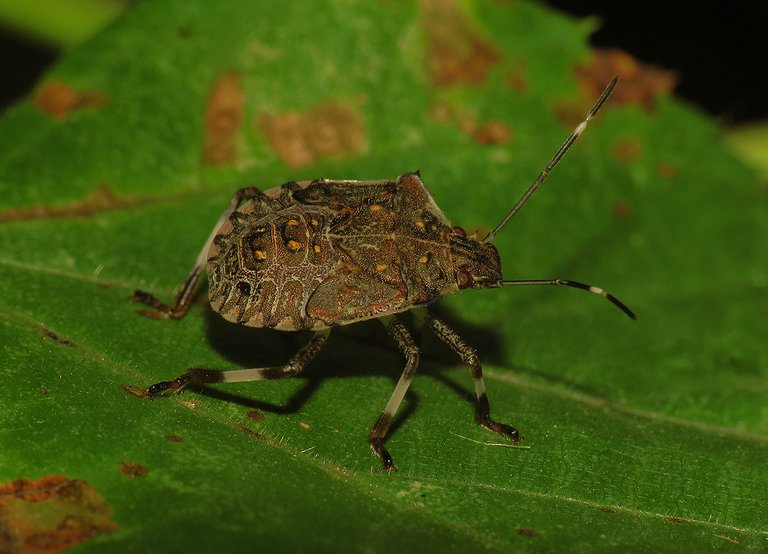
This is the second of the three bugs mentioned in the title, the Halyomorpha halys, commonly known as the brown marmorated stink bug. The Halyomorpha halys shown in this photograph is a wingless 5th instar nymph. After the next molting, this will be a winged adult. Both adults and nymphs feed on the sap of various plants.
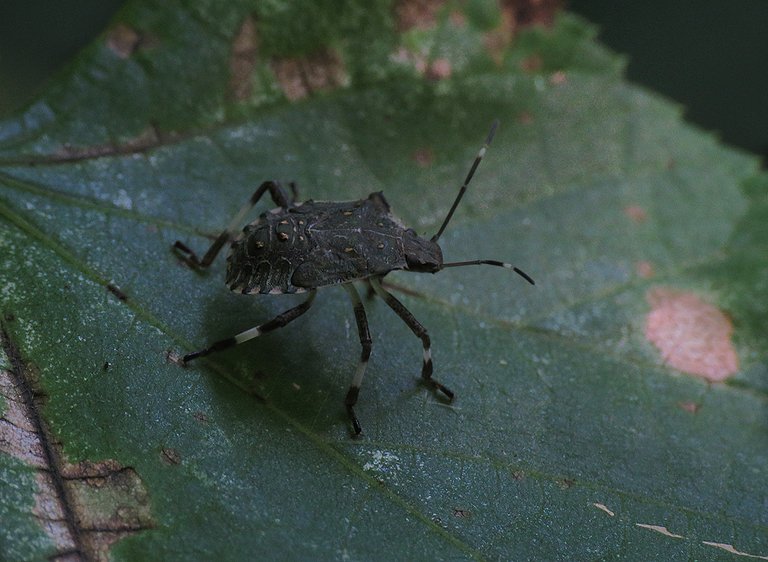
Here you can see the same insect photographed in ambient light. The brown marmorated stink bug belongs to the Pentatomidae family.
In this shot, you can take a look at the leaves of the branches about a meter or two above my head. The leaves, shown in the following photograph ...
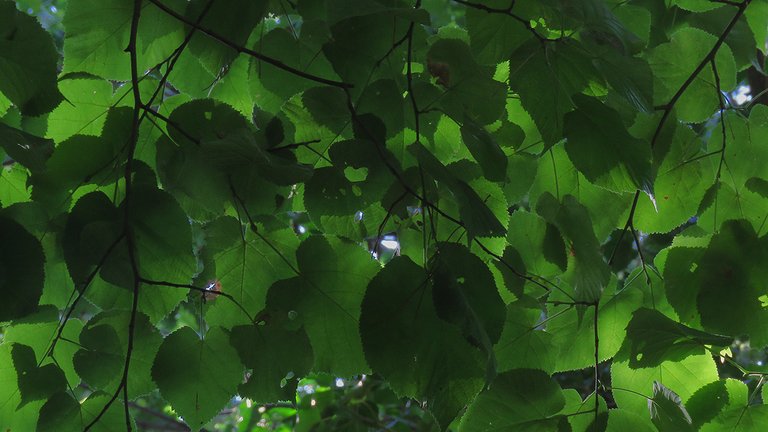
... were situated considerably higher.
I had to use the zoom of my camera to bring them closer to my eyes.

The third hemipteran species promised by the title was found and photographed among the different leaves of the same kind ...
... the brown leaves that have fallen from the Tilia platyphyllos tree.
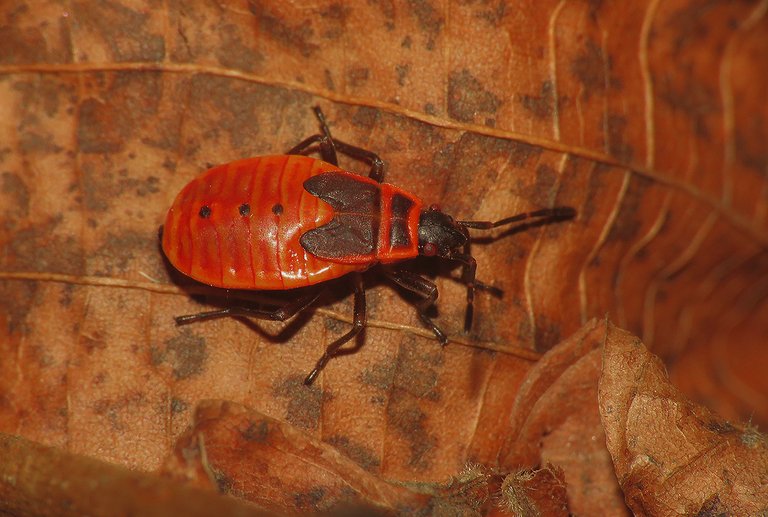
The name of this species from the Pyrrhocoridae family is Pyrrhocoris apterus. Here you can see a 5th instar nymph ready to become an adult. In the following photograph ...
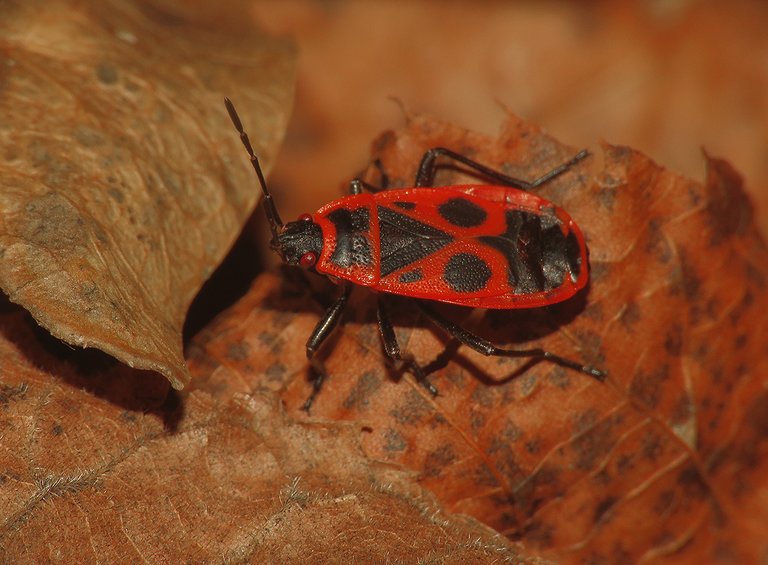
... you can see an adult. The diet of these bugs consists primarily of seeds from lime trees (various Tilia species) and mallow seeds but they can also be seen feeding on the carcasses of other insects.
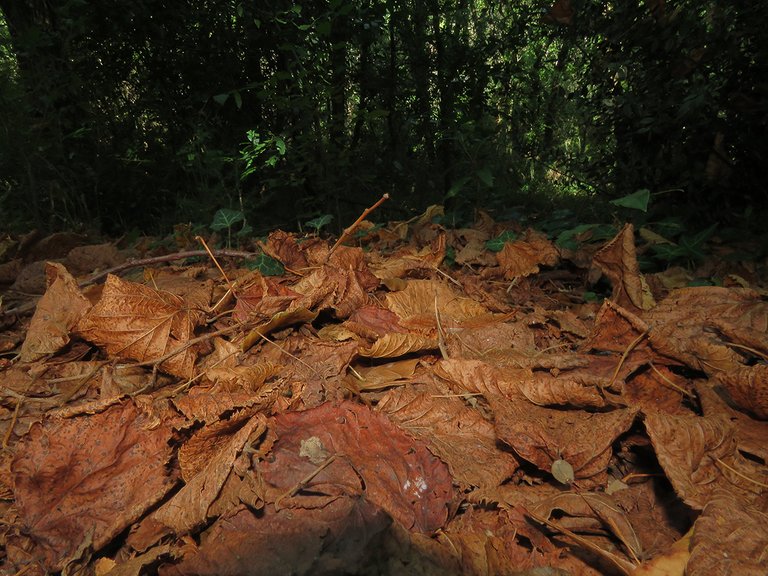
The leaf litter on the ground around the trunk of the Tilia platyphyllos tree provides plenty of food and shelter for large groups of Pyrrhocoris apterus bugs.
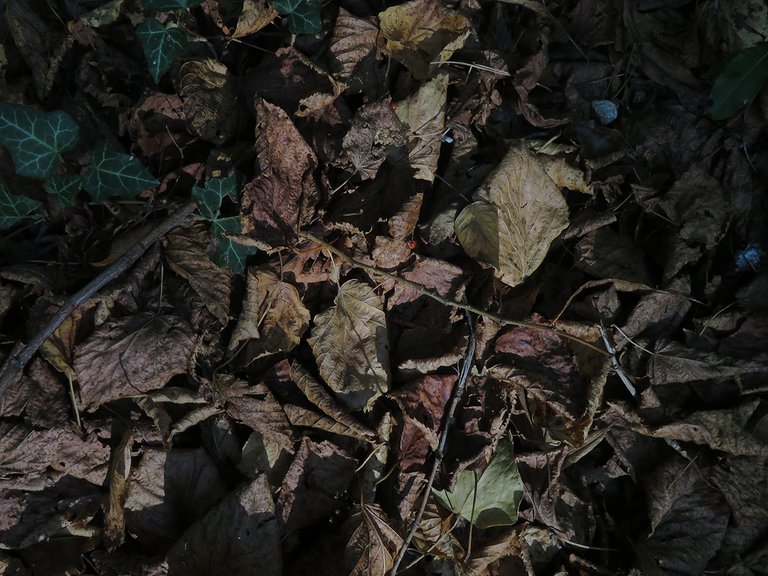
The tiny red dot in the center of this shot is a Pyrrhocoris apterus nymph.
Here you can see two small nymphs on the green surface of the ivy leaf.
In this last shot, especially if you enlarge the picture by clicking on it, you can count five Pyrrhocoris apterus nymphs among the fallen leaves.
The following links will take you to the sites with more information about the protagonists of this post. I found some stuff about them there.
https://en.wikipedia.org/wiki/Tilia_platyphyllos
https://en.wikipedia.org/wiki/Nagusta_goedelii
https://en.wikipedia.org/wiki/Eriophyes_tiliae
https://en.wikipedia.org/wiki/Speckled_wood_(butterfly)
https://en.wikipedia.org/wiki/Brown_marmorated_stink_bug
https://en.wikipedia.org/wiki/Pyrrhocoris_apterus
AND THAT'S IT. AS ALWAYS HERE ON HIVE, THE PHOTOGRAPHS ARE MY WORK.


